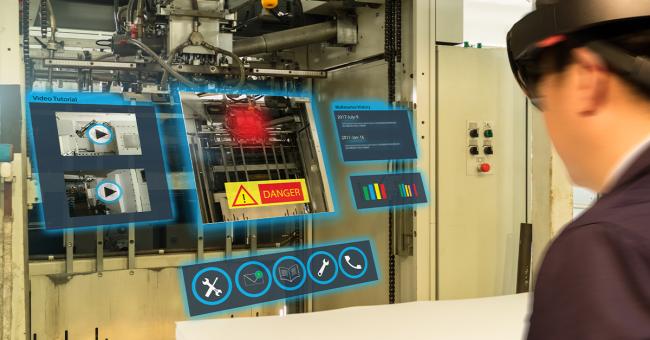
Lori Niles-Hofmann is a senior learning strategist with over 20 years of L&D experience across many industries, including international banking, management consulting, and marketing. Her specialization is large-scale digital learning transformations and she is passionate about helping companies navigate through the ambiguity of change. She is the author of Data-Driven Learning Design, How to Decode Learner Digital Body Language.
Topics
4 Strategic Ways L&D, IT and the C-suite Should Work Together

BREAKING DOWN SILOS IN ENTERPRISE L&D: PART 2
Digital transformations in enterprise learning are exciting and bold initiatives. Learning and Development (L&D) teams are highly motivated to gain traction and yet, it can seem as though the C-suite and IT don’t always share a strategic vision for how to make use of this essential role. The truth is, business leaders and IT are the best friends L&D could have. Getting a “NO” from them sometimes protects your projects from risk, yet it may not feel that way.
In our 2022 Enterprise Learning Annual Report, based on a survey of 260+ L&D professionals, responses revealed that executive direction and buy-in was the top driver for learning initiatives. This follows with surveys from previous years. After all, the most effective learning cultures start from the top down, with the C-suite establishing its short- and long-term value and then instilling that in leaders and employees.
A new finding in this year’s survey: Operations nearly tied with the C-suite for top spot in departments and functions that L&D teams will focus the most resources on in 2022. It makes sense. The C-suite determines the business objectives, and operations is then tasked with making sure the people, processes and tools are in place to make it happen across the organization. Learning programs must be in close contact with both functions to ensure the proper training and skills are in place for what must be done.
On the technology side, current research shows that IT Leadership is involved in 33 percent of L&D projects, while CTOs are only involved in 7 percent of projects. The same skills required in implementing a new learning management system (LMS) or learning experience platform (LXP) are essential to high-profile technology integration projects across the company.
Consider this: An L&D leader experiences perhaps a handful of large-scale platform deployments over a career. An IT manager likely has a dozen such projects on the go over the course of a single fiscal year. From a pure volume perspective alone, L&D teams can clearly learn from the experts. Likewise, IT will always be far more current on topics such as cybersecurity and risk. They can see beyond a single solution and ensure your transformation integrates across the organization.
So, how do you build the C-suite/IT/L&D relationship?
Begin building connections with business leaders and IT long before looking at solutions. Too many L&D teams fall madly in love with a provider before they even know if the technology will truly encompass all that is needed to accomplish business goals, as well as pass IT requirements around risk. This leads to wasted time and only builds frustration.
1. Start with the Problem.
Work with the C-suite and operations to determine the problem(s) you are trying to solve. Ensure you understand it from a 360-degree perspective and have a clear understanding of the goals you will work together to achieve.
Next, approach IT from the perspective of the problem you are trying to solve, not just the type of platform you want. IT sees lots of different solutions, and they will be able to help build your request for proposal (RFP) requirements and think more broadly than the scope of just learning technologies. Additionally, try to speak their language. If you are in an enterprise, a term like ISO/IEC 27001 (relating to information security standards) will be critical. Know your terminology and integrations—from APIs to AI to HRCMS—to ease conversations and understanding.
2. Learn the Ground Rules.
Friendship is not a one-way street, and the C-suite and IT do have some responsibilities to build a frictionless partnership. When working with the C-suite, following are some tips to remember:
- Know your audience: Try using a one-size-fits-one approach. Tailor your pitch to your executive partner; know their passions and connect with them in personalized ways.
- Speak their language: Time is one of the C-suite’s most valuable assets. They will judge ideas based on how quickly they can understand them. Make your meetings brief, top-level and of interest to them. Relate your plans to broader business priorities and goals.
- Make friends with the CFO: Identify ways learning can support the finance team directly, perhaps with new skills or tech. Show how education impacts the bottom line.
- Keep Learning top of mind: Learning can be one of the most visible aspects of a business strategy with the right support. Involve your CEO in learning initiatives. Have them help you make course recommendations.
And here are some tips to building a strong partnership with IT:
- An updated IT requirements document: This critical resource helps immediately weed out which solutions will pass testing in your environment. The specs should include parameters for digital learning-specific technologies, which may require some upskilling on the part of IT.
- Transparency: Ask IT to show how they implement solutions. You will likely find they use different tools to project manage their own work due to volume. Your standalone excel spreadsheets will not integrate, so you will need to find ways to access and adapt to these systems.
- Realistic testing timeframes: Do not forget to ask about timelines. It may take only two weeks to test out a technology, but slotting this into a busy calendar among other IT projects may take six weeks or more.
- IT roadmap: Know the vision for IT projects and products, so you can align, lest your transformation becomes a digital outlier, never to be used or integrated.
3. Build an Alliance.
If we have learned anything from “Game of Thrones,” alliances are important (no spoilers ahead). It would be realistic, although unfortunate, to say the average L&D department has had limited bargaining power. We are often in a position of asking to be added to the budget and regularly justifying ROI to stakeholders. This is disappointing, as upskilling a workforce will mean the difference between companies which excel and those struggling to source talent.
While change takes time, L&D leaders are becoming more data-driven. Meanwhile, it is critical to partner with IT to demonstrate credibility and executability when approaching the C-suite with new solutions. Believe it or not, IT may be in a position to assist with funding parts of an L&D transformation, particularly if it is part of a larger technology upgrade. And if additional budget is required, stakeholders will offer significantly more buy-in if they see IT has already been a part of the scoping process.
4. Develop a Business Case.
Another tip is to look at the way IT has written their business cases for roadmap initiatives. Many L&D proposals fail because they are focused on metrics unimportant to the business. These need to be translated into demonstrable ways investment in learning will contribute to tangible goals and profit.
For too long, L&D has viewed themselves as an outlier or an add-on to the greater company function. They were the underdogs. But in this hyperconnected, digital world, there’s no room to create silos instead of collaborating. Your business and IT leadership have a wealth of experience when it comes to digital transformations, and we can learn from their successes and challenges.
For more insights into breaking down silos between L&D and the business, you can read part 1 of the series, “Why Collaboration is Vital to Corporate Learning Strategy.” You can also download our 2022 Enterprise Learning Trends report to see how your colleagues are steering and investing in L&D to educate and engage in an unpredictable world.

Lori Niles-Hofmann is a senior learning strategist with over 20 years of L&D experience across many industries, including international banking, management consulting, and marketing. Her specialization is large-scale digital learning transformations and she is passionate about helping companies navigate through the ambiguity of change. She is the author of Data-Driven Learning Design, How to Decode Learner Digital Body Language.

